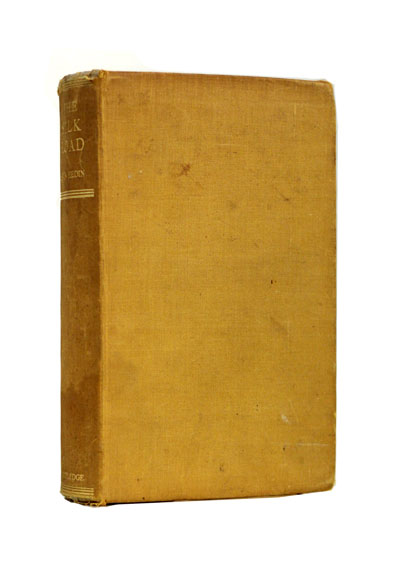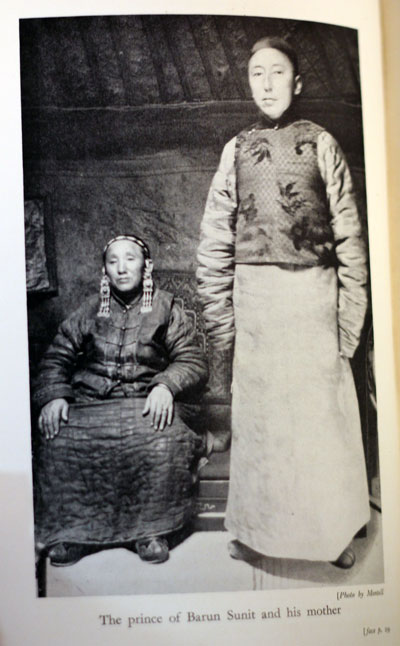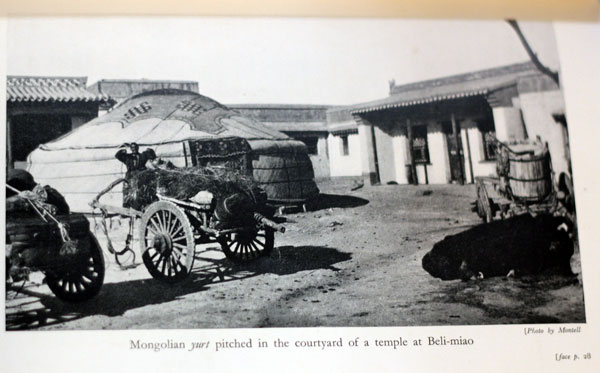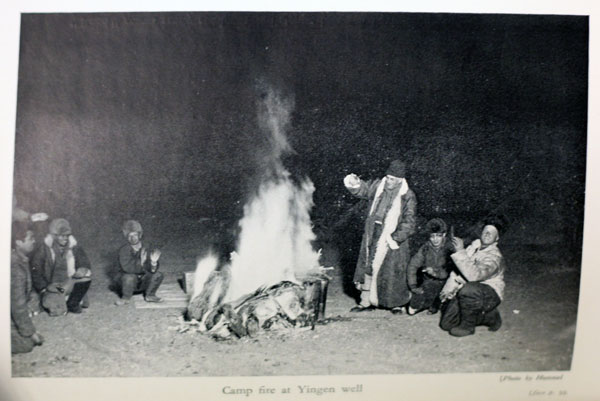First English edition. A hugely important and pioneering work on Central Asia.
About the author:
Sven Anders Hedin, KNO1kl RVO, (19 February 1865 – 26 November 1952) was a Swedish geographer, topographer, explorer, photographer, travel writer, and illustrator of his own works. During four expeditions to Central Asia, he made the Transhimalaya known in the West and located sources of the Brahmaputra, Indus and Sutlej Rivers. He also mapped lake Lop Nur, and the remains of cities, grave sites and the Great Wall of China in the deserts of the Tarim Basin. In his book Från pol till pol (From Pole to Pole), Hedin describes a journey through Asia and Europe between the late 1880s and the early 1900s. While traveling, Hedin visited Constantinople (Istanbul), Caucasus, Tehran, Mesopotamia (Iraq), lands of the Kyrgyz people, India, China, Asiatic Russia, and Japan. The posthumous publication of his Central Asia Atlas marked the conclusion of his life’s work.
At 15 years of age, Hedin witnessed the triumphal return of the Arctic explorer Adolf Erik Nordenskiöld after his first navigation of the Northern Sea Route. From that moment on, young Sven aspired to become an explorer. His studies under the German geographer and China expert, Ferdinand Freiherr von Richthofen, awakened a love of Germany in Hedin and strengthened his resolve to undertake expeditions to Central Asia in order to explore the last uncharted areas of Asia. After obtaining a doctorate, learning several languages and dialects, and undertaking two trips through Persia, he ignored the advice of Ferdinand von Richthofen to continue his geographic studies in order to acquaint himself with geographical research methodology; the result was that Hedin had to leave the evaluation of his expedition results later to other scientists.
Between 1894 and 1908, in three daring expeditions through the mountains and deserts of Central Asia, he mapped and researched parts of Chinese Turkestan (officially Xinjiang) and Tibet which had been unexplored until then. Upon his return to Stockholm in 1909 he was received as triumphantly as Adolf Erik Nordenskiöld. In 1902, he became the last Swede (to date) to be raised to the untitled nobility and was considered one of Sweden’s most important personalities. As a member of two scientific academies, he had a voice in the selection of Nobel Prize winners for both science and literature. Hedin never married and had no children, rendering his family line now extinct.
Hedin’s expedition notes laid the foundations for a precise mapping of Central Asia. He was one of the first European scientific explorers to employ indigenous scientists and research assistants on his expeditions. Although primarily an explorer, he was also the first to unearth the ruins of ancient Buddhist cities in Chinese Central Asia. However, as his main interest in archaeology was finding ancient cities, he had little interest in gathering data thorough scientific excavations. Of small stature, with a bookish, bespectacled appearance, Hedin nevertheless proved himself a determined explorer, surviving several close brushes with death from hostile forces and the elements over his long career. His scientific documentation and popular travelogues, illustrated with his own photographs, watercolor paintings and drawings, his adventure stories for young readers and his lecture tours abroad made him world famous.
As a renowned expert on Turkestan and Tibet, he was able to obtain unrestricted access to European and Asian monarchs and politicians as well as to their geographical societies and scholarly associations. They all sought to purchase his exclusive knowledge about the power vacuum in Central Asia with gold medals, diamond-encrusted grand crosses, honorary doctorates and splendid receptions, as well as with logistic and financial support for his expeditions. Hedin, in addition to Nikolai Przhevalsky, Sir Francis Younghusband, and Sir Aurel Stein, was an active player in the British-Russian struggle for influence in Central Asia, known as the Great Game. Their travels were supported because they filled in the “white spaces” in contemporary maps, providing valuable information.
During his expeditions Hedin saw the focus of his work as being in field research. He recorded routes by plotting many thousands of kilometers of his caravan itinerary with the detail of a high resolution topographical map and supplemented them with innumerable altitude measurements and latitude and longitude data. At the same time he combined his field maps with panoramic drawings. He drafted the first precise maps of areas unresearched until that date: the Pamir mountains, the Taklamakan desert, Tibet, the Silk Road and the Himalayas. He was likely the first European to recognize that the Himalayas were a continuous mountain range.
He systematically studied the lakes of inner Asia, made careful climatological observations over many years, and started extensive collections of rocks, plants, animals and antiquities. Underway he prepared watercolor paintings, sketches, drawings and photographs, which he later published in his works. The photographs and maps with the highest quality printing are to be found in the original Swedish publications.
(from wikipedia)







